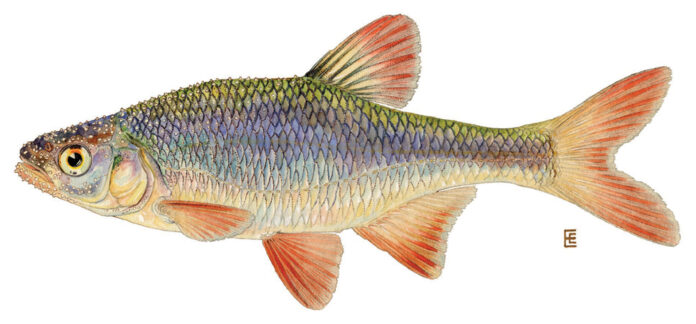
BY HARRY WEEKES
For as long as I can remember there have been little fish in my life, or what I always refer to as “minnows.” My mom spent her summers growing up in northern Minnesota, and when we visited her childhood cabin as kids ourselves, we always caught minnows. They were bait for our lake trout fishing expeditions, which were invariably a lesson in total futility and frustration for my grandfather. I would carefully drop the main weight on my line to the bottom of the lake, then reel it up a bit, and then spend the next—(insert the length of my grandfather’s patience on this particular night)—saying, “Was that a bite?” “Should I check?” “I think it took the minnow.”
The short version of this long story: I have never caught a lake trout.
When my parents moved to Idaho, a “cabin in the woods” was in their blood, so to speak, and in the early ’70s they bought a place on Pettit Lake; a cabin we visited as kids, and now visit with our kids, and where, in the middle of August, I was standing on a rock with hundreds of minnows swarming around my legs. They do this, the minnows of Pettit—they swarm you and then graze up and down your legs for just about as long as you will let them.
Some people find this creepy. I find it both mesmerizing and bizarrely calming.
One of the things I learned along the way is that not all little fish are minnows, even though all minnows are little fish. As is so often the case, the generalizations I remember from a kid are a bit more nuanced as an adult. Minnows, it turns out, are a specific family of fish, the Cyprinidae. And it’s a big family (actually, the largest freshwater family of fish in the world). So, there are a lot of minnows. And a lot of little fish called minnows. And even some fish named minnow that aren’t minnows. This doesn’t even mention the fact that different people will call the same kettle of fish chubs, shiners or minnows, and that these can all be the same thing or, in certain cases, different.
If that’s not confusing enough, one of the great things about people is we can just use a name or a word wrong so often that the meaning changes. It turns out, you can call all small fish minnows as a catchall for, well, small fish. Sure, ichthyologists will do backflips at such crude characterization of our finned friends, but hey, backflips are cool.
When environmental constraints are persistent and severe enough, different organisms adapt similar characteristics. If you think of water as really thick air, which it kind of is, then fish end up constrained much in the same way birds are by flying through the air. It is hard to fly, and swimming through water is difficult, generally pushing fish to similar torpedo shapes (in this case, it is more accurate to say that torpedoes are fish shaped). So, a lot of fish look really similar. If you want to talk about all the non-torpedo-shaped fish, I would love to talk about swim bladders. Remember my grandfather? We came back early for a reason.
The point is this. There are tiny little minnow fish that spend their lives in alpine lakes, sampling every little and big thing that comes their way as a possible source of food in a pretty food-barren world. When this happens to be you, take a few moments to watch as they move up and down your legs, cleaning and eating their way around you.
Another amazing little creature sharing our world, and maybe even sharing you.
Harry Weekes is the Founder and Head of School at The Sage School in Hailey. This is his 50th year in the Wood River Valley, where he lives with Hilary and one of their three baby adults- Simon. The other members of the flock, Georgia and Penelope, are currently fledging at Davidson College in North Carolina and Middlebury College in Vermont.


